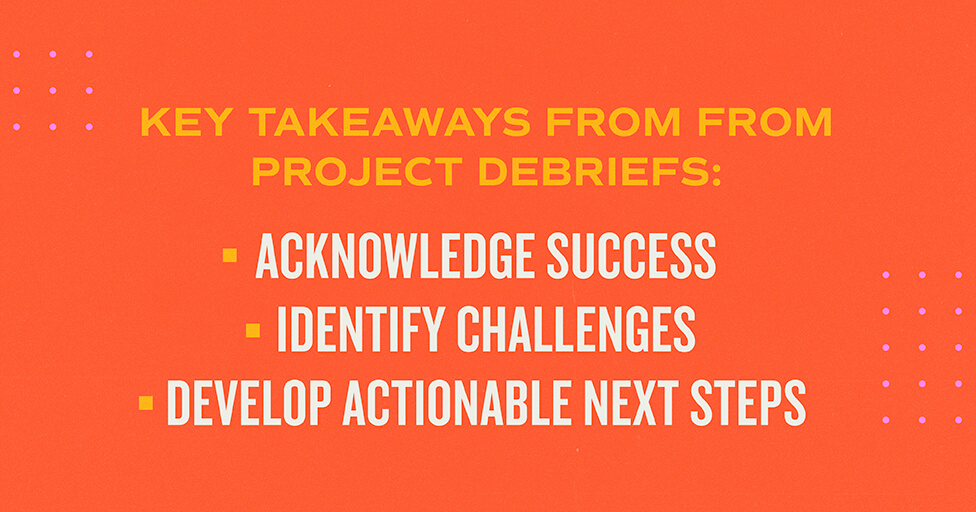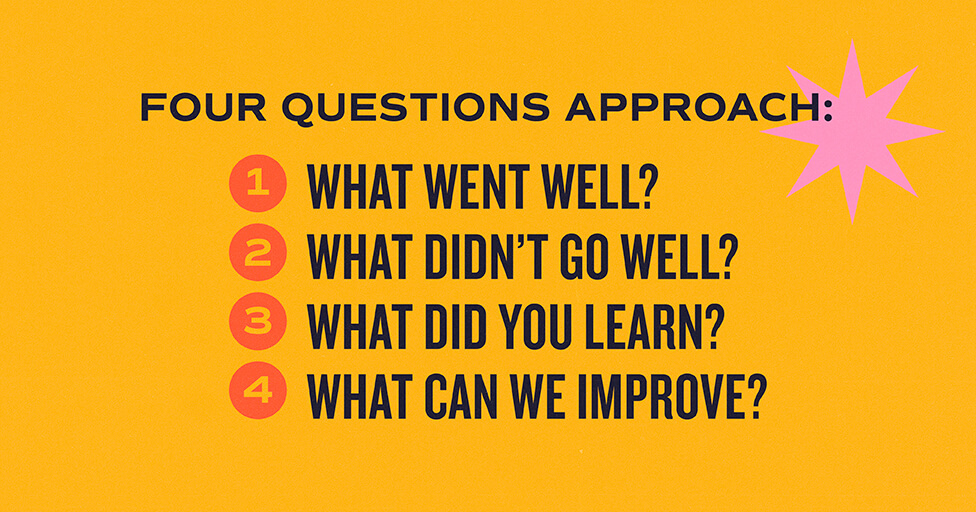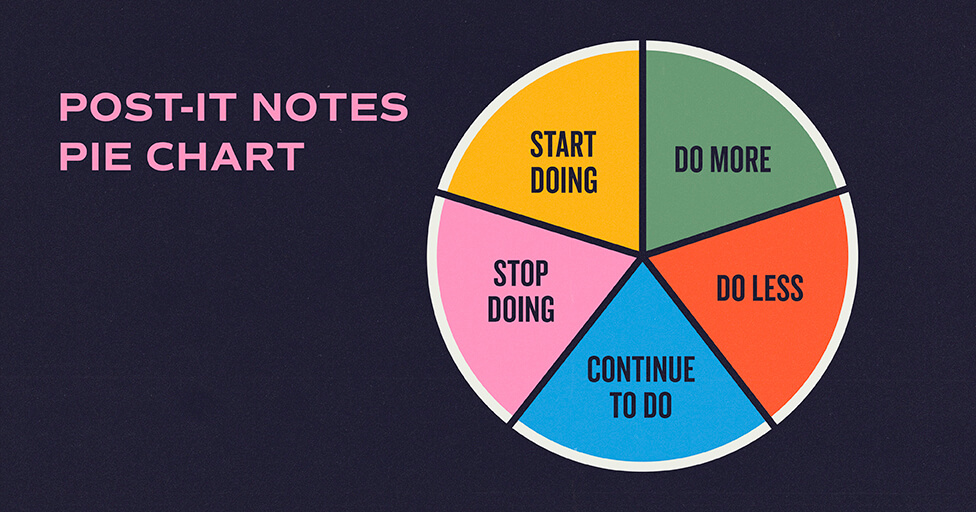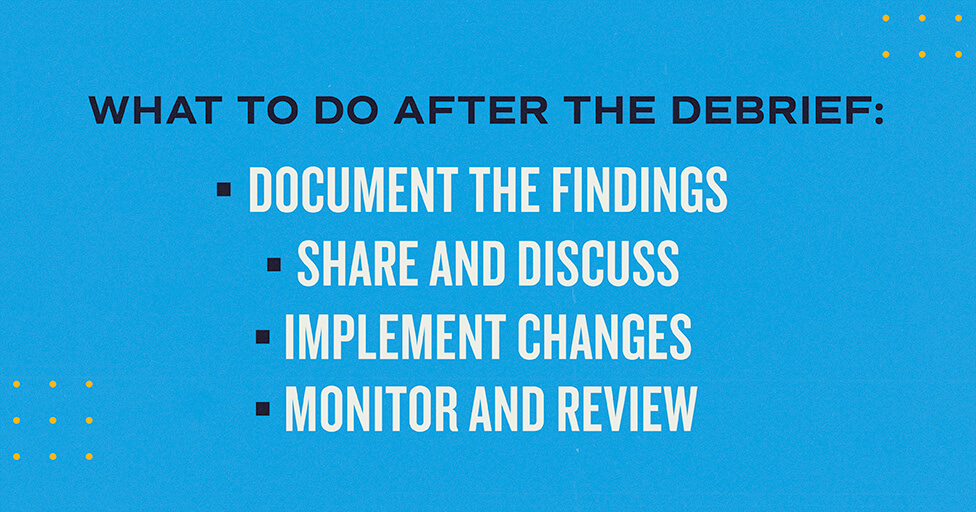
It’s easy to view the completion or final delivery of a project as the end goal. Deploying a brand-new website. Launching a new campaign in market. Seeing the packaging design hit the store shelves. It’s easy to think of these as endings.
We should lean on T.S. Eliot and recall that “to make an end is to make a beginning.” The end of a project marks the beginning of an equally important phase: the project debrief. Also known as retrospectives or post-mortems, these meetings are crucial to ensuring we learn from our past experiences and continuously improve.
What Are Project Debriefs and What Is Their Purpose?
In the simplest terms, project debriefs are structured meetings held after the completion of a project, regardless of its success or challenges. The main goal isn’t to vent frustrations (although sometimes that can be healthy). The primary purpose of these meetings is to gather feedback from all project participants to evaluate what went well, what could have been improved, and what lessons can be learned for future projects. This reflective process is essential because it enhances, refines, and fosters a culture of management practices.
Not every single project will receive a post-mortem discussion. Any team member can request a debrief; however, it’s more common that project managers and account managers will agree when a debrief is needed.
By analyzing the project, we can identify patterns and insights that might otherwise go unnoticed. These insights help us to:
- Acknowledge Successes: Celebrate what worked well and dig into the factors that led to this success.
- Identify Challenges: Pinpoint the obstacles and issues encountered during the project along with their root causes.
- Develop Actionable Next Steps: Generate concrete, actionable recommendations to enhance our processes and avoid repeating mistakes.

When to Hold Them, and Who Should Attend?
Timing and participation are crucial for effective debriefs. Recency bias and our ability to recall events from many weeks ago all require a debrief to be held as close to the completion of a project as possible. This ensures that the experiences are still fresh in the minds of the team members, allowing for more accurate and detailed feedback.
The debrief should be attended by all key stakeholders involved in the project, including (but not limited to):
- Project Managers: To provide an overview and facilitate the discussion.
- Team Members: Designers, strategists, copywriters, account managers, media managers, and any other individuals who contributed to the project.
- Clients: Sometimes it can be beneficial to include clients to gain their perspective, especially on what went well and what could be improved from their viewpoint.
Having a diverse group of attendees ensures a holistic view of the project, encompassing different perspectives and insights.
Two Approaches We Practice
Over the years we’ve tried a variety of methods for structuring these discussions, and for us the following two approaches have yielded the most fruitful discussions.
Four Questions
In this approach, each team member is asked to answer the following questions in advance of the meeting:
- What went well?
- What didn’t go well?
- What did you learn?
- What can we improve?

These survey responses are collected by the Project Manager who will compile them into a deck to facilitate discussion. The Project Manager will look for common themes among the responses. Unattributed verbatims will be added when necessary as well.
Post-it Notes Pie Chart

Here a pie chart is drawn on the board with equal sized pieces. The labels given to each piece are:
- Start Doing
- Do More
- Stop Doing
- Do Less
- Continue To Do
Each participant gets their own stack of Post-its. The team is asked to think about each pie slice, one at a time, and jot down things that match up. For example, for “Do More” someone may say they would have benefited from more frequent stand-up meetings for this project. Each person stands up and sticks their note within the corresponding pie slice and elaborates on their statement. This can lead to healthy dialogue among participants.
Similar to the Four Questions approach, the Project Manager will capture all meeting notes and look for common themes while outlining appropriate next steps.
What To Do After the Debrief

The real value of a debrief lies in what we do with the information. Here are some tips to ensure that the insights from a debrief will lead to meaningful improvements:
- Document the Findings: The Project Manager leading the debrief and facilitating the conversation should also be carefully taking notes and creating action items to continue to review, document, and discuss. A report should be produced and distributed to leadership as necessary.
- Share and Discuss: The debrief report is shared with the entire team and relevant stakeholders. This transparency ensures that everyone is aware of the lessons learned and can contribute to the ongoing discussion about improvements.
- Implement Changes: Based on the recommendations, it’s time to make necessary adjustments to our processes, tools, and workflows. These can be simple tweaks to existing document templates or bring on discussions about wholesale changes to the way we approach projects.
- Monitor and Review: The implemented changes are monitored over time to assess their effectiveness. Review your changes in subsequent debriefs to discuss effectiveness.
By treating project debriefs as a critical component of our project management lifecycle, we cultivate a culture of continuous learning and improvement within our agency. This approach not only enhances our efficiency and effectiveness but also ensures that we deliver the highest quality work to our clients, time and time again.
Subscribe to our newsletter
Get our insights and perspectives delivered to your inbox.


